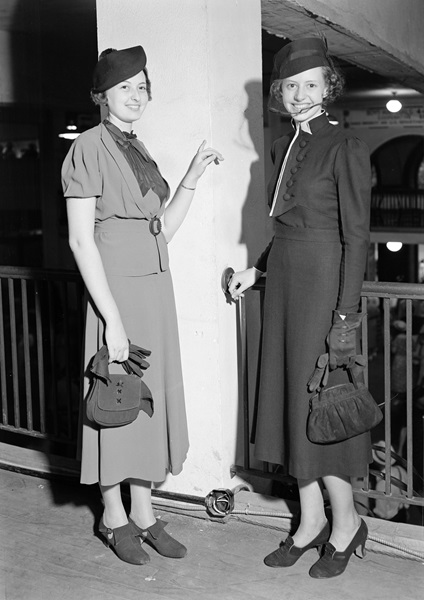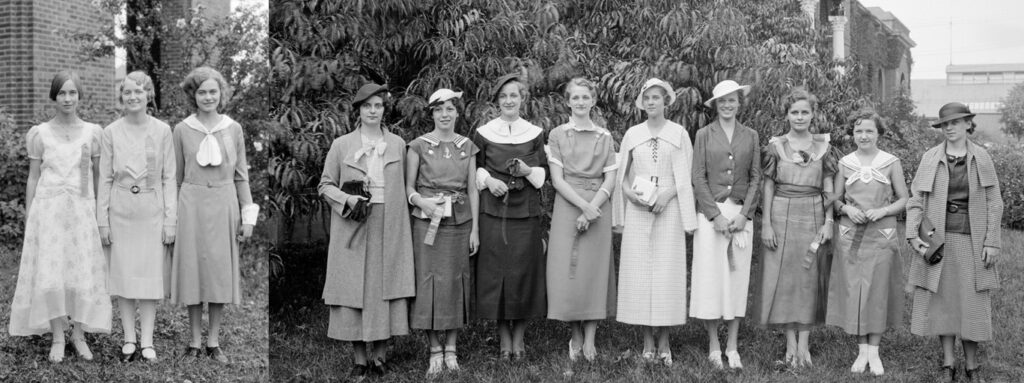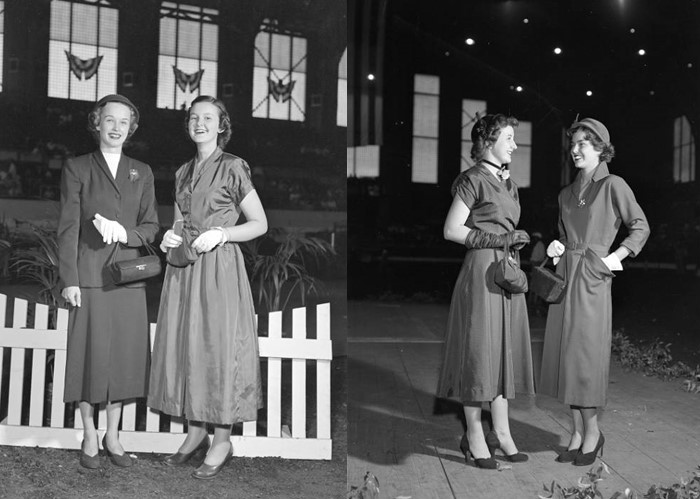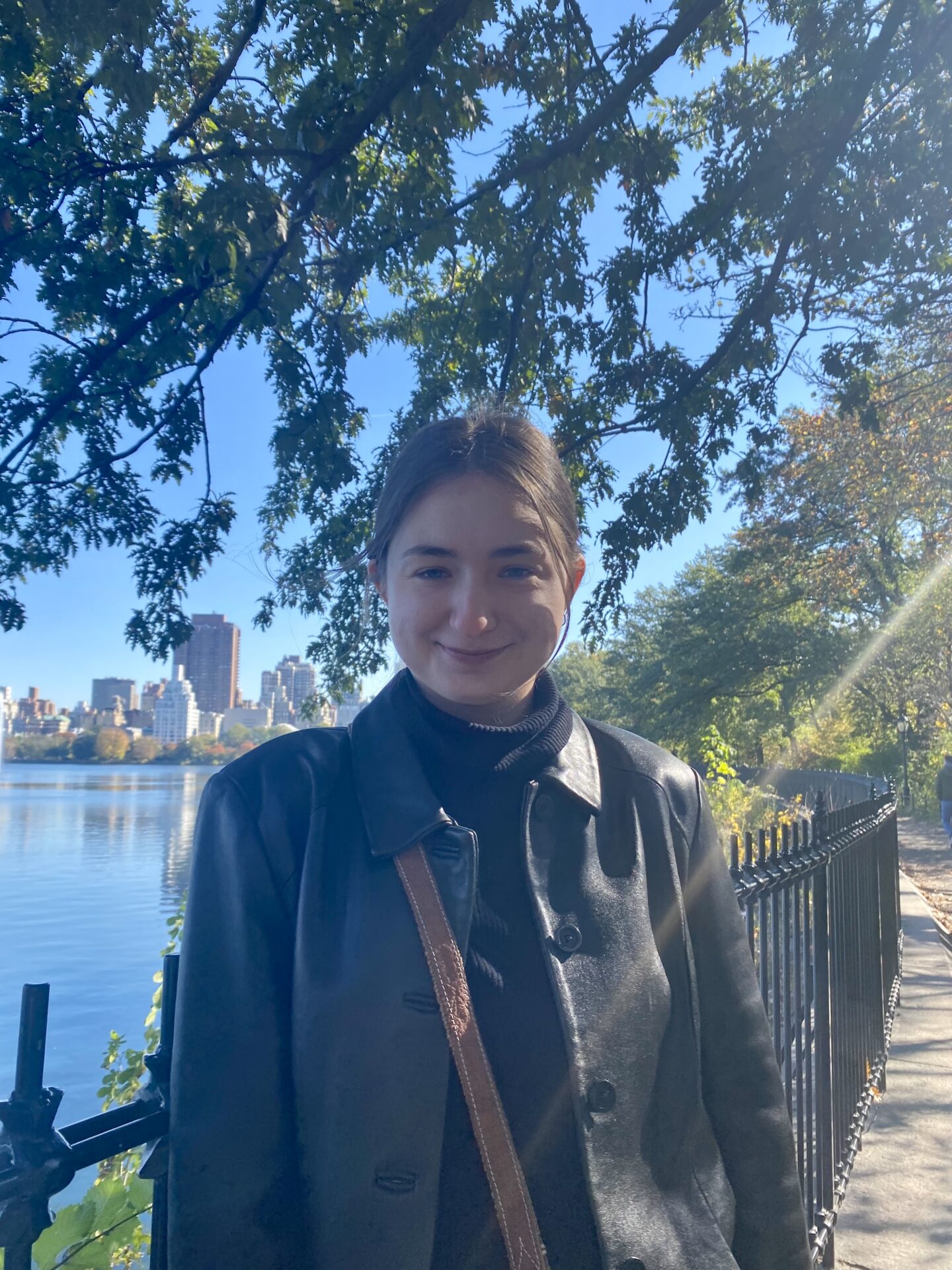
Plan your visit
Haute Hoosiers: Women’s Fashion at the Indiana State Fair 4-H Dress Revue
March 14, 2024

While researching the IHS collections for a new library exhibit on fashion history, I stumbled upon a set of black-and-white photographs from the 1930s to early 1950s. The images show girls at the Indiana State Fair modeling their handmade garments for the 4-H Club’s Dress Revue. Dress categories include summer, winter, wool school, cotton school, wool sports, party, spectator sports, and afternoon/street dresses. Girls from all over the state participated in the event.
The Dress Revue was an opportunity for girls in 4-H to practice and display their sewing abilities. But technical skill was not the only priority when constructing these dresses; the garments reveal the sewers’ participation in broader American fashion trends from the Great Depression through the end of WWII. This event gave girls the opportunity to show off creativity, skill, and social engagement through dressmaking and modeling.

Winners (left to right) Julia Goss, Mary Marshall, Martha Goss in 1930; Lora Mae Nesbit, Clarena Schlegel, Helen Goss, Jane Etter, Anna Marie Walter, Mary Jean Yeager, Jean Justus, Adabelle Mangus, Margaret Jones in 1934.
Soft silhouettes and long skirts were popular in the early to mid-1930s. Some dresses pictured (especially those in the left photo) reveal that the drop waist of the 1920s had not entirely gone out of fashion yet.
During the Great Depression, the high prices of new clothing prompted many families to make clothes from feed or flour sacks. It’s difficult to discern the material of some of these dresses, but whether they used cotton, wool, or tulle, the girls could undoubtedly use their sewing skills to create economical homemade clothing during this time of financial difficulty.

Winners Mary Beck and Catherine Leirer in 1938; Wanda Yeager, Rosemary Miller, Becky Ann Purvine, Ruth Royer in 1939; Martha Joyce Utley, Beverly Anderson, Allis Jane Williams, Virginia Lou Thomas, Joan Parks, Irma Piel, Patricia Ann Connell, Mary E. Emerson, Phyllis Robbins, Lois Myers, Norma Ellingwood, Dortha Martz in 1941.
In the late ‘30s and early ‘40s, hemlines become shorter and silhouettes more angular, resembling the “Utility dress” designed in Britain to ration fabric more efficiently during World War II. This excludes the two floor-length, flowy “party dresses” seen in the first and third images; some special occasion styles, like these, did not incorporate the same trends as those in the school or street categories.

Winners Pat Mahin and Peggy Creek in 1949; unidentified girl and Nancy Mann in 1950
In 1947, however, Dior’s “New Look” prompts the return of long, full skirts and more traditionally feminine silhouettes that recall styles of the 1930s.
These images illustrate the fast-paced nature of trends in this period of women’s fashion. Come see more examples of women’s fashion history at Haute Hoosiers: Women’s Fashion History in the IHS Collections on display now in the William Henry Smith Memorial Library.
All photos included in this blog are from the J.C. Allen and Son Collection, 1926-1952 (P0490).









